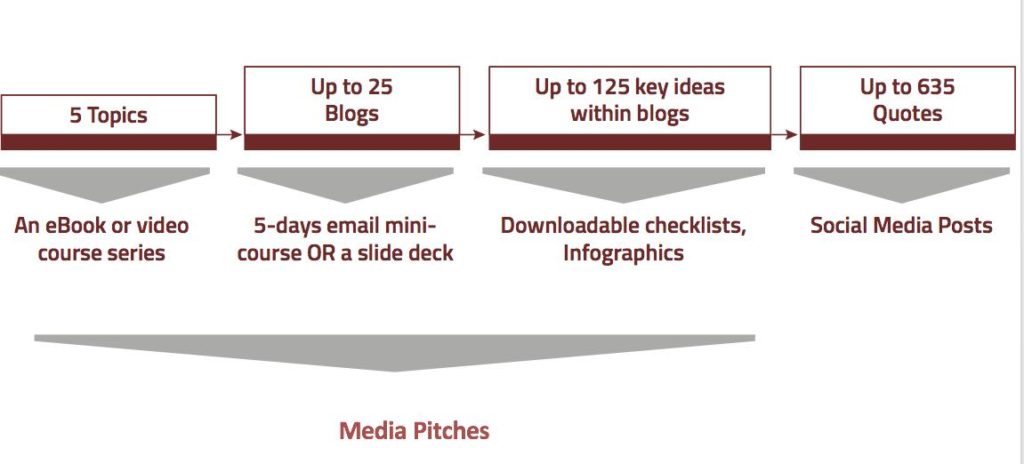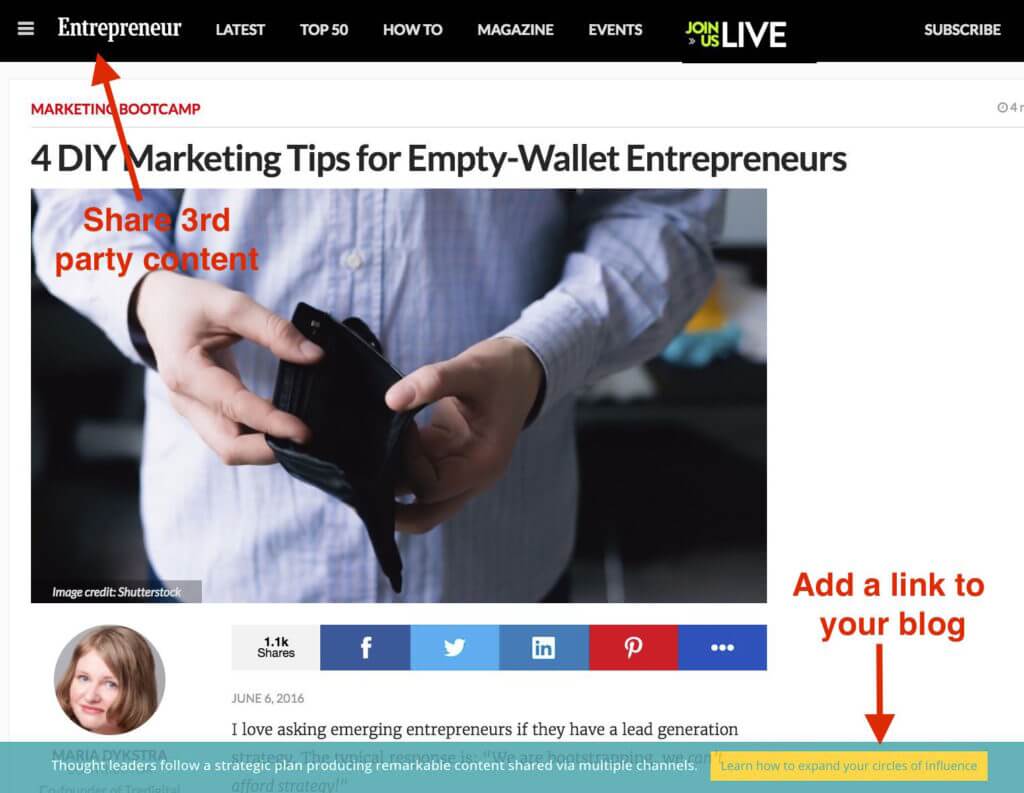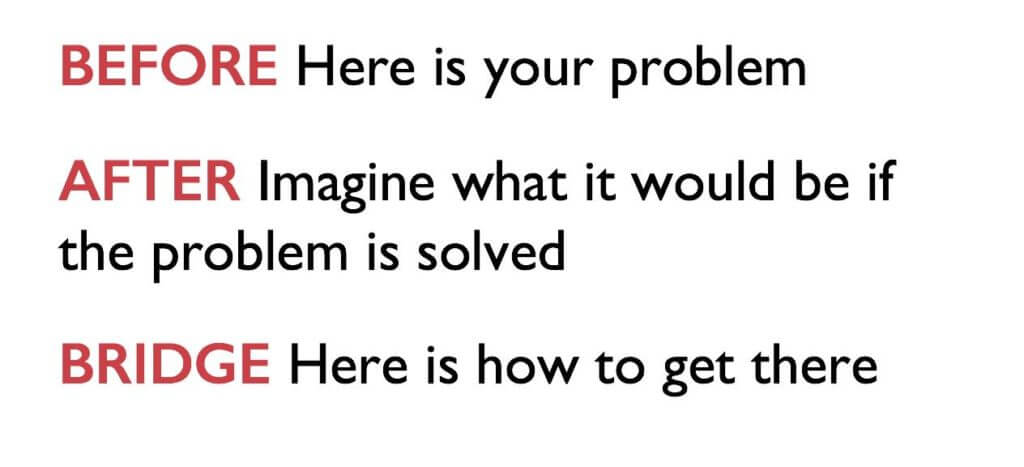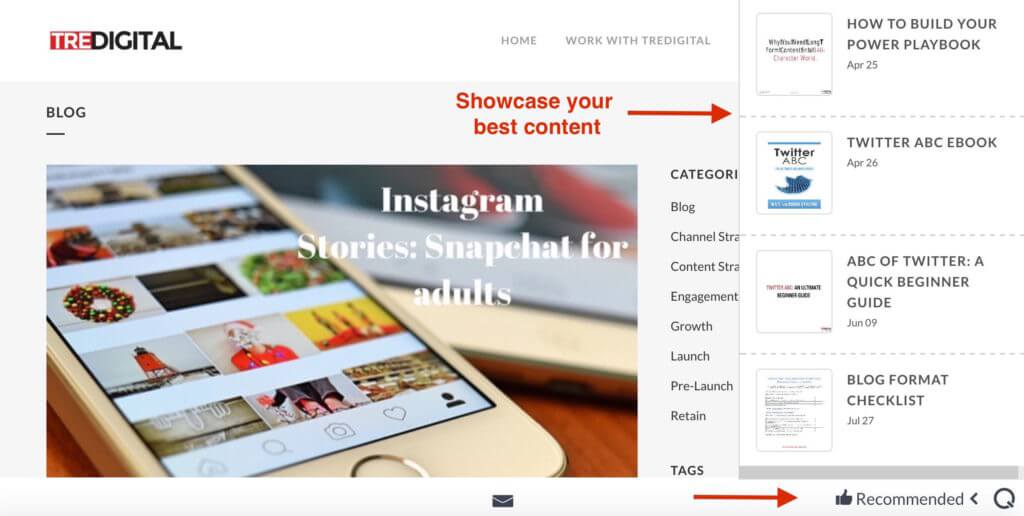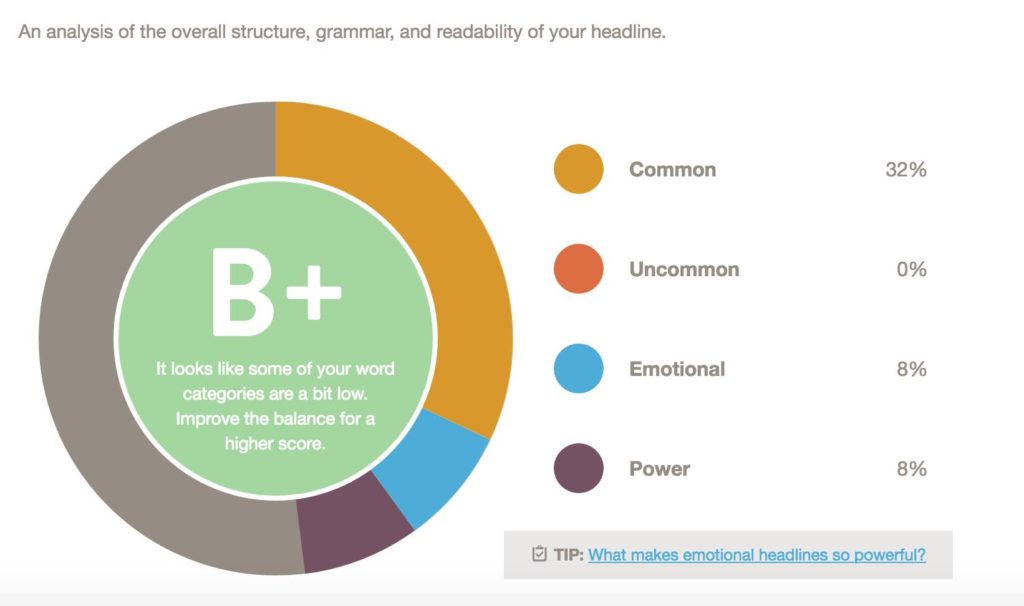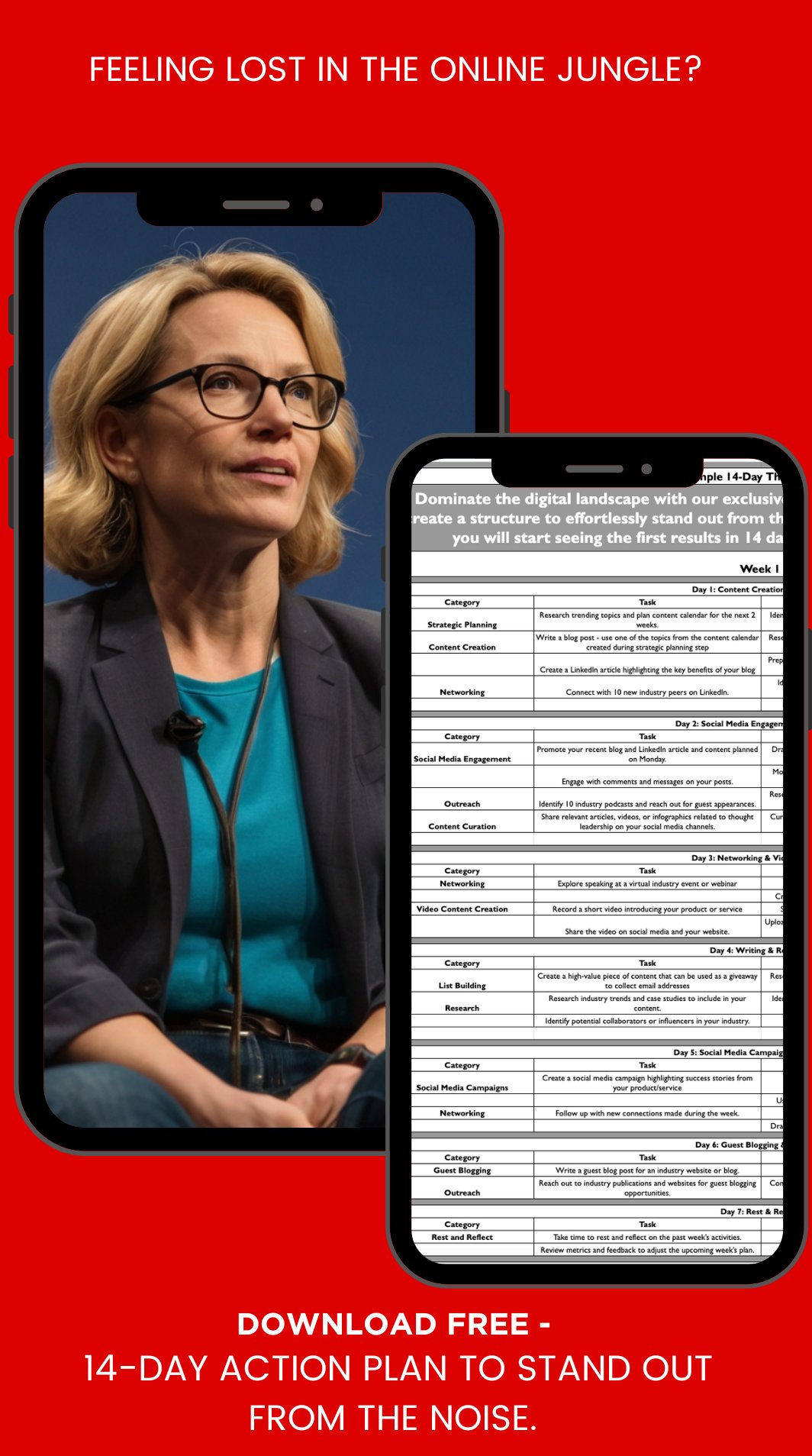Many thought leaders I meet talk about limited return on their time spent creating content. After hours invested into a blog, they only a handful of people read it.
In most cases, just a few simple tweaks to their content strategy lead to a significant increase in readers.
If your blog is not getting the love it deserves, consider these simple tips and tools. These will help to immediately accelerate your content effectiveness and consequently your online influence.
Table of Contents
Toggle1- Increase Length of Your Content
According to the latest study from Moz: 85% of content published is less than 1,000 words long. However, the majority of the blogs shared on social media are over 1,000 words.
This is very simple: If you would like for people to share your blog, write longer posts.
[bctt tweet=”85% of published content is less than 1000 words; most of the shared blogs are over 1000 words via @moz” username=”@tredigital”]
2 – Pitch your articles to top industry publications and blogs
Study top publications in your industry for an opportunity to share your content.
Google “How to submit an article to <insert publication>” , then learn about their editorial process. Many publications list their editors’ contact information and content submission steps.
Subscribe to HARO to receive daily updates on interview requests by the reporters and bloggers. Scan these regularly and respond to the most relevant queries as soon as you see them.
It gets easier once you have a few guest blogs under your belt. You may have to start with smaller publications and gradually expand your circle of influence.
3 – Repurpose your content
In addition to creating remarkable content learn how to maximize your content.
Design your content strategy with an intent to combine your blogs into an ebook or an email course. Turn your main points into a slide deck that you can upload to SlideShare.
Create a simple checklist or an infographic to support your main points. Many fiverr designers will do a great job without breaking your bank.
4- Create 15-20 social media posts for each blog and schedule them monthly
Most bloggers share their blog on social media once or twice and then forget about it.
Experienced thought leaders keep recycling their posts. Guy Kawasaki is known to repeat his tweets every 8 hours.
For each of your blog posts identify top 15-20 key ideas, quotes, pieces of advice. Write a short social media post for each then schedule them on social media.
Use tools, such as Recurpost, to automatically repost your tweets or Hootsuite bulk upload to schedule them at the same time.
5 – Make sharing easy with sharing tools
People love sharing quotes and interesting stats. In addition to writing share-worthy content, make it easy for your readers to share it.
Have social media sharing buttons visible. Integrate Click To Tweet and SumoMe Highlighter plugins to better control the message being shared.
6 – Use tool that will recommend your content
I am a strong believer in sharing someone else’s content at least 60% of the time. It works much better than “me only” social media posting schedule.
If you are concerned with missing an opportunity to promote your content, look at using FollowedApp and StartAFire. These free tools allow you to insert a Call to Action pointing to your site.
You can now share an article from Entrepreneur.com and insert a link to one of your blogs at the bottom of the page.
7 – Pin your latest posts to the top of your social media profiles (Twitter and Facebook)
Both Twitter and Facebook allow you to pin one of your posts to the top of the page.
By pinning your post, you are potentially increasing engagement 6-10x. Whenever you publish your latest blog post, simply pin it to the top of your social media page.
8 – Change the URL on Instagram and use emoticons
Instagram was specifically designed as a link-free zone. You can, however, use the main URL field to promote your latest blog or central piece of content.
Add a few emoticons (☞ ☞ ☞ ) to draw attention to the URL and make it stand out.
9- Use Before/After/Bridge formula for social sharing
Social Media is a big driver of traffic to your content. Practice creating social media posts that will attract readers’ attention and will entice them to click to your post.
Be mindful of using “click-bait” formulas as Facebook’s new algorithm is trained to recognize and ignore them.
Articulate the problem in users’ language (before), paint the picture of what it would be when the problem is solved (after) and invite people to click (bridge).
Make sure that your content supports the claim made on social media.
10 – Integrate links/content from others and use @mention with their quote and link to blog
Including a link to other top thought leaders within your content helps boost your SEO. It also establishes the connection with these influencers.
If you share your content on social media remember to tag your source by adding @ before their name. It is a subtle way to inform them of your blog. Chance are they will retweet, repost, like your post. If they do, your post will be seen by their audience.
11 – Use recommended content plug-in on your blog site
Similar to promoting your blog on other platforms, you can install a Qwardo plug-in or Hello Bar popup on your main website. These tools will recommend additional content to the site visitors.
The more users are engaged with your blog posts, ebooks, or white papers the stronger your influence is.
12 – Create images with top quotes using Canva or PabloApp
Articles containing images get 94% more total views. The good news is: creating images is not as difficult as you may think.
Canva and Pablo are easy-to-use tools for designing professional looking graphics. Just use their templates to produce the correctly sized graphics for your blog, ebook, social media posts. Both tools have access to a vast library of images. You can also find images on royalty-free sites like Pixabay.
Adding the title of the blog to the featured image is rumored to help with engagement.
13 – Pay attention to trends and write about popular events
I am a strong believer in sticking to a pre-defined editorial calendar. It helps with delivering the depth of content expected of an authority in your niche.
But there is one exception. Some of our most viewed and shared pieces were about a big unexpected change affecting the industry. If you are one of the first people to write about a “hot” trend, you will be noticed by more people.
Some of our most viewed and shared pieces were about a big unexpected change affecting the industry.
Subscribe to Quibb or other digests covering your industry. Pay attention to trending hashtag and topics on social media platform of your choice. Aim to be one of the first people to write about a “hot” trend.
14 – Experiment with different blog headlines
There are too many blog posts published daily for the boring headlines to be noticed.
Avoid generic headlines and use the attention-grabbing ones. If are struggling with choosing the right headlines, learn more about different headline formulas or try CoSchedule Headline analyzer.
15 – Research and integrate top keywords
Google is now smarter, it understands who your user is, it knows more about their intent, and is able to differentiate the type of searches they perform.
That does not mean that keywords are dead.
Yes, the old tactic of simply finding the keyword phrases through traditional research tools no longer works. Instead, you must know your users and dig deeper into their wants and needs.
Use keywords that will be relevant to the specific persona. Learn more about evolution of search and keywords in this video.
16 – Reference your past blogs in the new blogs
When you spend time planning your content, many of your blog posts are inter-connected.
Remember to include links to your past blogs, talks, presentations, courses in the new blogs you are writing. As long as the content is still relevant, you may revive a post you wrote 10 years ago by adding a link to it.
17 – Send regular updates to your subscribers with your latest blogs
Even if you only have 10 subscribers sending regular updates to them is worth your time. If you cringe at the thought of creating a newsletter, remember this: Unless you run an ecommerce website, consistency in communication always trumps the elaborate design.
Create a simple, text-only template with a teaser version of your blog. Make sure it includes a few links to your blog at the beginning, middle and the end of your update. Send your email update the same day you publish your blog or the following day. If you are just starting your email campaign, a free version of
Send your email update the same day you publish your blog or the following day. If you are just starting your email campaign, a free version of Mailchimp is all you need.
CONCLUSION
You can significantly increase the effectiveness of your content strategy by using the right tools and techniques. However, content marketing success is not instant; it is a long-term game. You will be investing a lot of time upfront, to see result 3-5 months later.
Think of your content is a chance to showcase your deep expertise on the topic, not sell your product and services right away. Balance educational content with relevant lead magnets and consistently think of creative ways to share it with more and more readers.
Looking to further increase your online influence? Schedule a quick intro call to find out how we can help.


